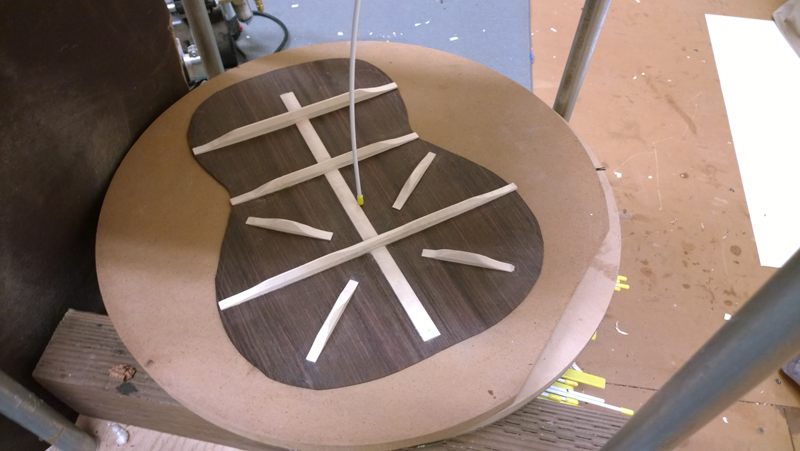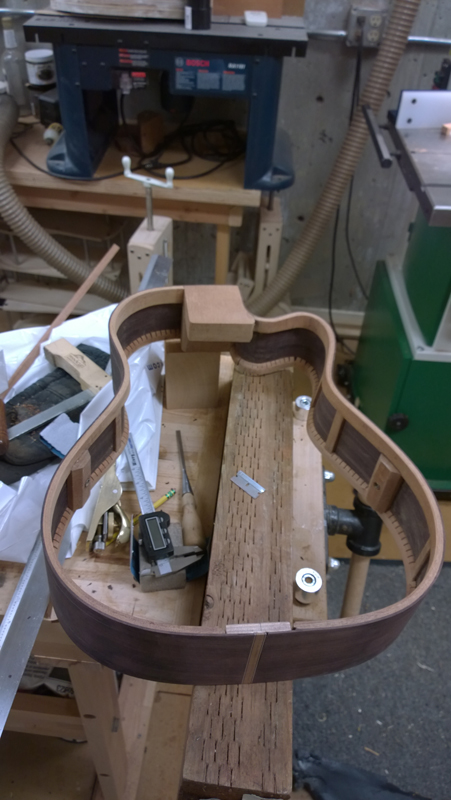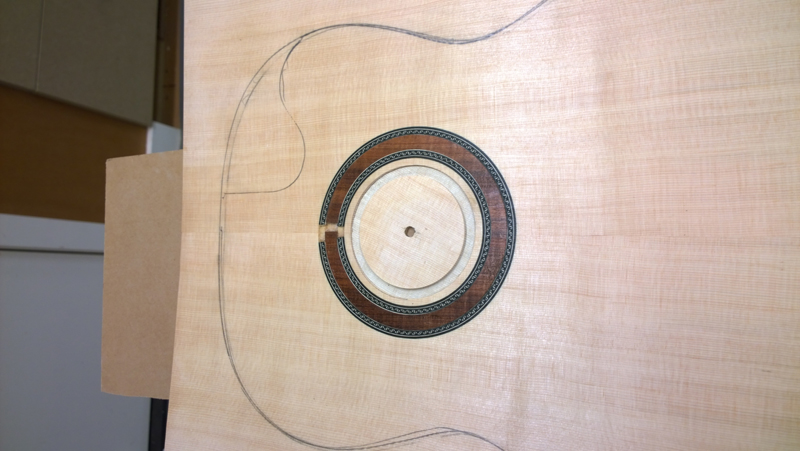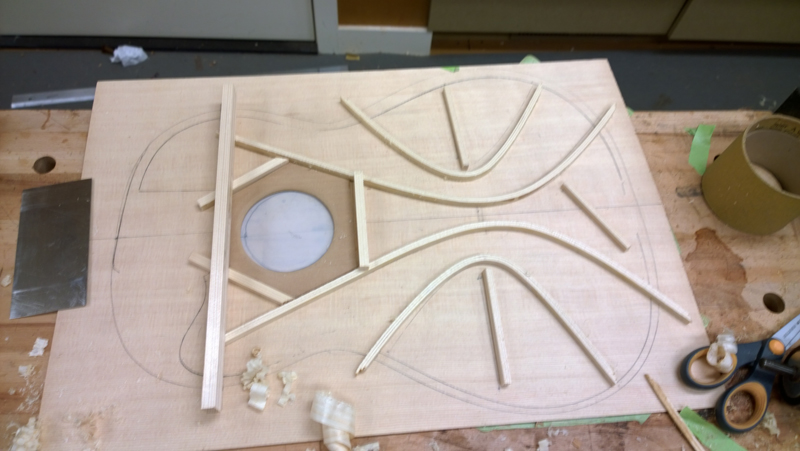Post
by Trevor Gore » Sat Feb 14, 2015 12:50 pm
There are many workable solutions around this, provided you understand how the top/neck geometry is going to work out.
In the "flat top rim" construction methods, the "flat" is your reference surface and measurements are generally taken in relation to that. Building in a solera, you can maintain a flat rim and dish out the middle, and (when the sound board is turned top uppermost) the dishing appears like a pitcher's mound relative to the flat outfield. All calculations are done relative to the flat outfield and the pitcher's mound is a 2 or 3mm hump that means you need less neck forward set to get to the 3&4mm action at 10-11mm string height above the soundboard. The "flat rim" method always produces a concavity around the sound hole. Put a straight edge from the top of the pitcher's mound to the top of the upper bout, there will always be a gap beneath it. Some people don't like this hollow look, some people don't have a problem with it, most people don't even notice it.
Building using radius dishes, you have to use a different reference, as there is no flat outfield to refer to. So projections of tangents are used, usually the projection of a tangent to the upper bout over the saddle position. The smaller the radius on the dish, the greater the gap between the projection of the tangent to the upper bout (PTUB) and the sound board at the saddle position. Obviously, this needs to be minimised for the preferred neck geometry (3&4mm action 10-11mm clearance) to work out reasonably. This is achieved by flattening the upper bout (max radius) but this still leaves a gap between the PTUB and the saddle position. Forward tilt (supplied by the wedge in the bolt-on, bolt-off (BOBO) design) gets things back to where they need to be.
If you build the sound board in a radius dish then glue it to flat rims, you have to be sure to reconcile your measurements from different references. For example, is 3mm of rise created in a radius dish (rather than a solera) still going to be 3mm of rise when you've glued the periphery to flat sides? Answer - no. What is it going to be? Answer - hard to predict. So therefore hard to figure out how much wedge is required. If you flatten the upper bout of the soundboard and glue to flat rims, it's likely that you'll get the hollow I mentioned earlier. If you flatten the upper bout of the sound board and the upper bout rims whilst keeping the rest of the sound board and rims dished, you don't get the hollow and you do get the geometry working out as prescribed in the book.
If you have a dished soundboard and glue it to flat rims, there's also a propensity, down the track, for cracks along the grain to appear in the waist region.
To machine the pocket for the loose tenon in the BOBO design, the top surface of the neck and the upper bout need to be co-planar. Also, the order of the processes is to dome the rims then flatten the upper bout. Going from flat rims and just doming the lower bout can also be done, but it is also easy to sand in a crank angle at the waist if you do it that way around, which will upset your geometry.
I think that covers all the possible options you've mentioned. They can all be made to work so long as you keep track of the geometry.







